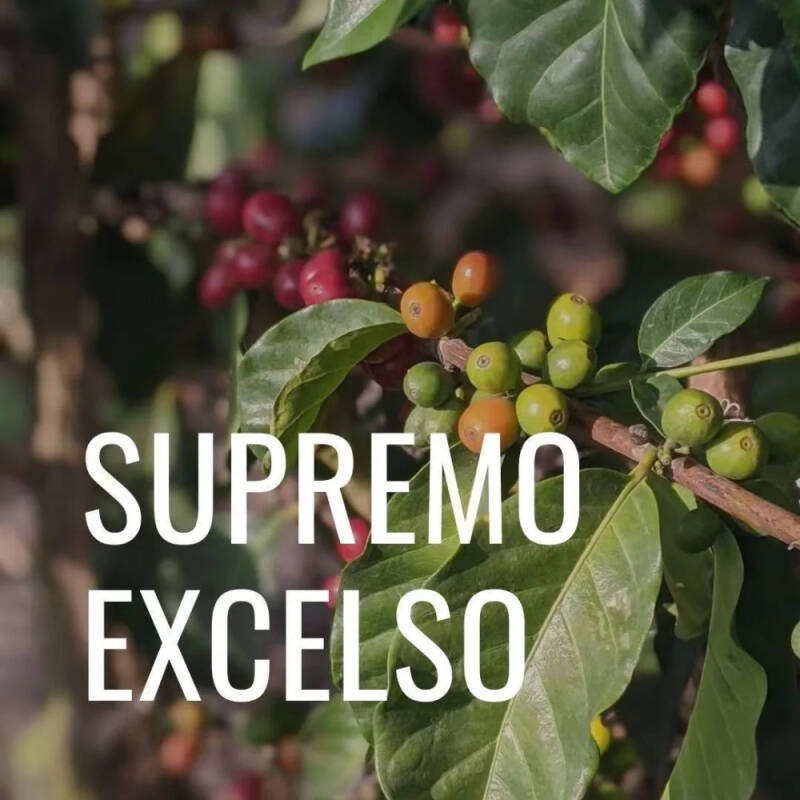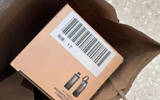What are Supremo and Excelso levels? Introduction to the grading Standard of Coffee Raw Bean in Colombia

Colombia's raw beans are graded based on defect rate and bean size. The words "Supremo" and "Excelso" are most commonly seen in sacks, and many people can't tell them apart and don't know what grades they represent, so in this article we'll talk about Colombian coffee bean grading standards.

What do you mean by "Excelso" on the sack? When you carefully look at the sacks of raw coffee beans exported from Colombia to the country, you can see that it will be printed with "Excelso-Caf é de Colombia". No matter how large the number of raw beans, all coffee bags that meet the Colombian export grade will be marked with "Excelso", and their grades are most common: UGQ, EP, Supremo.
In other words, most Colombian coffee sacks of raw beans exported around the world must be marked with the word Excelso, UGQ belongs to Excelso, EP belongs to Excelso, and Supremo also belongs to Excelso.
Excelso is the most widely used export standard grade by the Colombian Coffee Farmers Association (FNC) and the best grade for Colombian raw bean exports. Therefore, when the word "Excelso" is printed on the sack, it means that the coffee bean meets the export requirements of Colombian raw beans and has obtained the quality certificate shown by FNC.
Excelso grade coffee needs to meet: 500g raw beans, the size should be more than 14 mesh, and no more than 5% of raw beans are allowed to be between 12 mesh and 14 mesh, in general, 50% of raw coffee beans must be larger than 15 mesh. No pest, uniform color, no peculiar smell, clean flavor. The moisture content shall not exceed 12.5%, and the cumulative defect shall not exceed the limit of 24 points.
According to the strict rules of the Colombian National Coffee Council, the defects of raw beans can be divided into two types (as shown in the figure below), and the level of defects is rated by scoring. For example, Supremo 1260 (5%), which is the most commonly exported in Colombia, is a maximum of 12 first-level defective beans and 60 second-level defective beans in 500g raw bean samples.
Although the classification standard of mesh size is not the main standard to determine the quality and flavor of coffee, many producing areas think that the particles are full, neat and large, indicating that coffee beans have reached a state of full maturity and can develop better aroma types. it is also more conducive to uniform baking, thus forming a consistent flavor.
Colombian coffee beans are graded according to the size of the mesh, usually with a fixed size sieve, and different specifications correspond to different hole sizes. For example, the size of the mesh is 17 mesh, and beans larger than this size cannot pass through the screen, so the larger the number of the screen, the larger the beans left on the screen. At present, the three grades of coffee most frequently exported by FNC are Excelso UGQ 1260 (1.5%), Excelso EP 1260 (10%) and Excelso Supremo12*60 (5%).
Excelso UGQ 1260 (1.5%): the full name of UGQ is Usual Good Quality (usually high quality). The size of raw beans is more than 14 mesh, 1.5% of raw beans can be allowed between 12 mesh and 14 mesh, but it must be more than 12 mesh, and more than 50% of them are more than 15 mesh.
Excelso EP 1260 (10%): the full name of EP is European Preparation (European customization). The size of raw beans is more than 15 mesh, and 10% of raw beans are allowed to be less than 15 mesh, but must be more than 14 mesh.
Excelso Supremo 1260 (5%): the size of raw beans is more than 17 mesh. 5% raw beans are allowed to be less than 17 mesh, but must be more than 14 mesh.
In other words, the so-called "Supremo" is actually the classification level of the number of items.
In addition, Colombia has beans with more than 16 mesh called Extra, beans larger than 18 mesh than Supremo called Premium, and beans with almost uniform size in 15 mesh called Minama and so on. Colombia also has coffee beans that do not reach the Excelso export level, which is locally known as "Product of Colombia" and is commonly used to make commercial-grade instant coffee.
In Colombia, every farmer will report the number and enter the raw bean information, so that the raw bean can be traced back to the source in the future. The raw coffee beans exported from Colombia are usually named as country + producing area + grading + other. For example, the raw bean of Qianjie Huilan grain bean is Colombia Huila Supremo SC17/18 FNC.
Disclaimer: some of the pictures in this article come from the network, and some of the contents of the website, such as pictures, we will respect the origin of the original copyright, but due to the large number, there will be individual pictures and texts not in time to indicate, please forgive me. If the original author has any disputes can contact the website to deal with, once verified, we will immediately correct, by "Ka comment vdailycom" collation and editing, reprint please indicate, this article is intended to spread coffee culture, if infringement, please inform to delete, thank you ~!
Important Notice :
前街咖啡 FrontStreet Coffee has moved to new addredd:
FrontStreet Coffee Address: 315,Donghua East Road,GuangZhou
Tel:020 38364473
- Prev

Break two cups in one breath! Starbucks is accused of "touching porcelain"?!
▲ click to follow | Daily boutique Coffee Culture Magazine Coffee Factory, as a "big cup producer" in the coffee industry, Starbucks launches many new and exquisite cups every year, and the products on the display shelves are so frequent that people can't help joking that the speed of new cups on the star cups is even faster than that of "main" coffee. Off
- Next

Lucky bean-seeking team opens Indonesia station and will launch wet plane SOE
Luckin Coffee's team of bean hunters went to the producing area of Gayo on the Indonesian island of Sumatra to look for beans and introduced a wet planed coffee bean into the "SOE Little Black Cup" series, according to relevant media reports. November coincides with Indonesia's native Arabica coffee.
Related
- Being chased out of the rain in front of Starbucks?! Store: Sheltering from rain under umbrellas poses a safety hazard
- The white moonlight has changed?! Lucky launches "Big Winter Pear American"
- Hand-brewed coffee three-stage method, high-sweet and universal brewing method to share! What does the high sweet water level of hand-brewed coffee mean?
- What is the difference between raw, refined and full espresso coffee? How to extract espresso and taste good?
- A complete list of coffee bean names and their meanings! What is Yejia Shefi coffee? Where is Mantelin coffee?
- What grade does Arida Manor Kaduai coffee beans belong to? What treatment is Arida ASD slow anaerobic sun exposure?
- The milk tea cup becomes smaller?! Overlord Tea Girl launches a new "Return to Yunnan" series
- Accused of selling counterfeit and high-priced coffee beans! Well-known boutique coffee brand "Oukelao" bowed and apologized!
- How to make espresso dumplings? Can I eat coffee and glutinous rice balls together?
- Save the unformed and stagnant powder cakes in one second! What is the problem with stagnant water in the powder bowl of the espresso machine?

